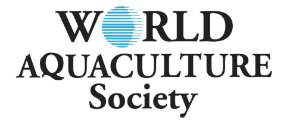Combining transcriptomic and peptidomic approaches to characterize complex protein hydrolysates for low fish meal diets: application to a white shrimp (Litopenaeus vannamei) hydrolysate and a Nile Tilapia (Oreochromis niloticus) hydrolysate.
Nile Tilapia (Oreochromis niloticus) and white shrimp (Litopenaeus vannamei) are two species that are extensively farmed round the world. As consumers increasingly prefer prepared fish to whole fish, by-product quantities are increasing. For example, Tilapia processing leads to approximately 60-70% of by-products that include muscle remains, head, viscera, skin, bones and scales. As a result, by-products are a promising raw material for aquafeed, more particularly by-product hydrolysates because they improve growth performances when added to low fish meal diets. Furthermore, fish and shellfish hydrolysates can have varied biological activities (antimicrobial, antioxidant or antihypertensive), so that they are attractive to the nutraceutical industry. Antimicrobial peptides are particularly attractive to aquaculture to improve disease resistance in farmed fish or keep food safe from and unspoiled by microorganisms. In this context, the characterization/identification of hydrolytic peptides of by-products was one of the main aims of the collaborative work between Aquativ Co. and the French academic laboratory BOREA.
To investigate the hydrolytic peptide composition of by-products, organs and tissues submitted to the hydrolytic process usually performed by Aquativ (DIANA Group) were collected from anesthetized living animals to extract mRNA. De novo (Illumina) RNAseq led to the assembly and the annotation of transcriptome databases. Thanks to these new sequence libraries, a peptidomic approach - OFFGEL-nLC-MALDI-TOF/TOF and nLC-ESI-MS/MS - allowed us to identify hydrolytic peptides from the two hydrolysates: 1374 and 1010 peptides for O. niloticus and L. vannamei, respectively.
Hydrolytic peptide libraries are a powerful tool to investigate the functional properties of by-product hydrolysates, but also to identify the proteins that provide the largest amounts of peptides. In L. vannamei, hydrolytic peptides ranging from 200 to 3000 Da are cleaved from hemocyanins (22%), cuticular proteins (18%), muscle proteins (9%), digestive enzymes (9%) ribosomal proteins (3%), and other proteins (39%). Moreover, 95.4% of these peptides have a molecular mass below 2000 Da, and 40.2% below 1000 Da. In O. niloticus, 28 proteins generated 43.7% of the hydrolytic peptides.For example, collagens released 263 hydrolytic peptides. On the other hand, 30.8% of the hydrolytic peptides had a molecular mass below 1000 Da, 63.1% were between 1000 and 2000 Da, and 6.1% between 2000 and 5000 Da.
Besides, bioactivity is correlated to the occurrence of high-molecular-weight (> 1000 Da) peptides, whereas palatability and growth are correlated to low-molecular-weight peptides (< 1000 Da). Therefore, it could be interesting to mix two hydrolysates with different molecular mass profiles to get additive bioactivity, palatability and growth effects. However, whatever the hydrolysate, antibacterial activity is usually recovered. Both tilapia and shrimp hydolysates displayed antibacterial activity on bacterial strains such as Yersinia ruckeri, Edwardsiella tarda and Bacillus megaterium.













